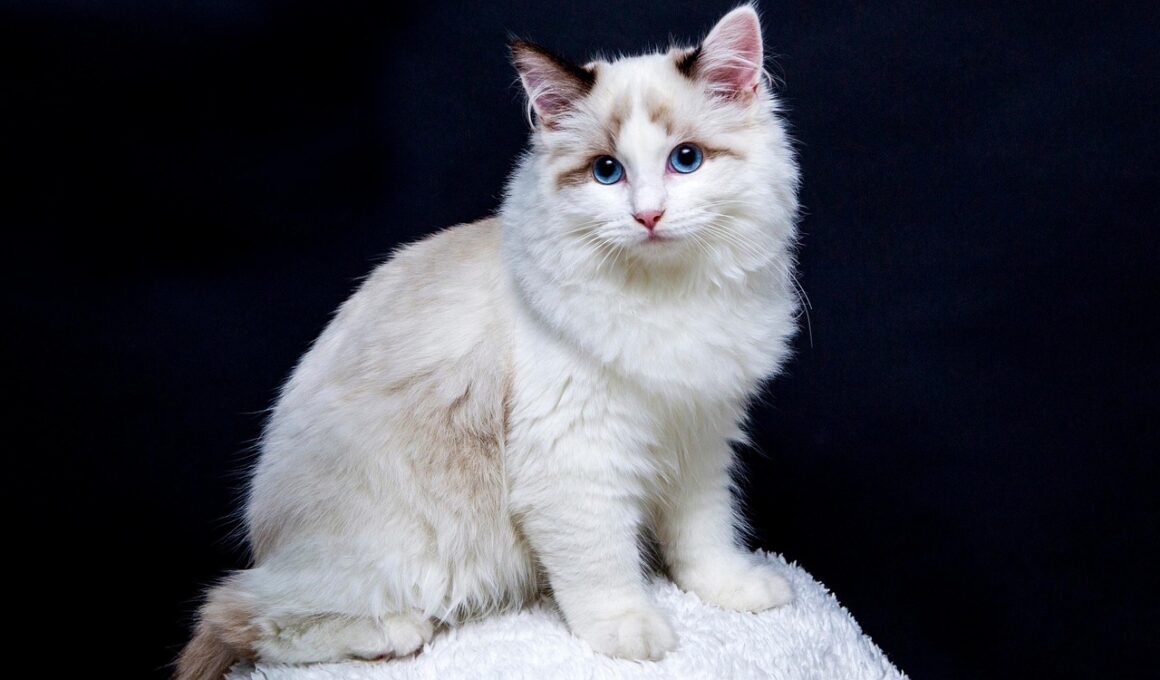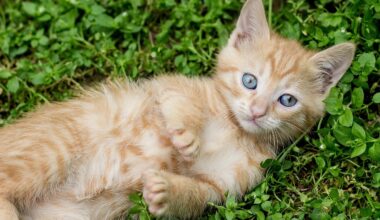How to Use Pedigrees in Cat Breeding Genetics
Understanding cat breeding genetics is crucial for successful breeder practices. Pedigrees serve as invaluable tools to study genetic heritage, ensuring that breeders can track lineage and breed with knowledge. By documenting ancestral lines, breeders maintain records that highlight specific traits or possible genetic health concerns. Each cat’s pedigree represents a family tree that holds essential information, such as health history, temperament, and physical attributes. When evaluating potential breeding pairs, a pedigree allows breeders to determine the likelihood of passing desirable traits to offspring. The study of these genetic blueprints helps minimize the risk of inherited diseases, facilitating healthier generations of cats. Experienced breeders understand the significance of utilizing a well-constructed pedigree in their breeding plans. A complete and accurate pedigree also enhances the value of the cats in the breeding program. Pedigree information can help both new and seasoned breeders avoid potential genetic pitfalls by identifying hidden traits or hereditary conditions. By leveraging pedigrees, one can make informed decisions, ultimately leading to improved breeding success and healthier felines. Thus, mastering cat breeding genetics through detailed pedigree analysis is vital for any dedicated cat breeder.
Pedigrees illustrate the lineage of cats, encompassing multiple generations. Each entry communicates vital genetic information, enabling focused breeding strategies. Acquiring a pedigree for every breeding cat is essential, as it shows lineage clarity. Along with simple ancestor lists, a proper pedigree includes titles for champions, grand champions, and other achievements that illustrate the cat’s genetic quality. A well-prepared pedigree records essential details such as color, pattern, and health status, crucial for avoiding inbreeding. Inbreeding can lead to genetic defects, thus emphasizing careful lineage consideration during breeding choices. In this context, feline breeder associations often recommend utilizing digital pedigree databases, streamlining record-keeping processes while ensuring precise lineage. These databases can prompt breeders to develop breeding strategies that carefully consider genetic validity. A well-maintained database offers the opportunity to identify preferred traits or to discover undesirable genetic factors. Furthermore, genetic testing should complement pedigree information to verify or challenge assumptions about lineage. Incorporating both pedigree records and genetic tests into breeding practices leads to balanced breeding decisions, producing cats with superior genetic traits. This approach ensures a successful breeding program rooted in scientific understanding and strategy.
The Role of Genetic Variants
Every feline encompasses genetic variants, each contributing to their individual characteristics. Understanding these variants is fundamental for breeders who aim to promote desirable traits while minimizing genetic disorders. With the assistance of a pedigree, breeders can identify specific traits passed through generations, illuminating breeding patterns. Traits influence not only appearance but also temperament and health. All cats, irrespective of breed, exhibit unique genetic variants enhancing their uniqueness and diverse traits. For example, coat color, ear shape, and eye color are all influenced by genetics, intricately documented in a cat’s pedigree. Breeders should prioritize genetic diversity, promoting healthier cats by avoiding traits linked to hereditary issues. Tracking dominant and recessive traits will empower breeders to better predict the outcome of future breedings. In addition, familiarizing oneself with Mendelian genetics can also aid breeders in making sound decisions when combinations are considered. Pedigree analyses provide the foundation for such genetic interpretations, enhancing the overall breeding outcome. An understanding of genetic principles is vital to predict the probability of specific traits, ultimately shaping better breeding practices within the breed community.
Another key aspect of utilizing pedigrees in cat breeding genetics is understanding inherited diseases. Certain breeds are prone to specific genetic disorders, raising the stakes for breeders. When assessing potential breeding pairs, breeders must scrutinize the pedigree for any history of inherited conditions. This knowledge enables them to make informed choices that prioritize the health of future offspring. Keeping thorough health records within the pedigree strengthens disease prevention efforts. Health concerns can be hereditary, thus any past instances of conditions like hypertrophic cardiomyopathy or hip dysplasia must be considered. Additionally, consulting veterinary genetics experts can bolster awareness around potential health risks. Genetic testing serves as an adjunct to pedigree review, allowing for a comprehensive understanding of the genetic landscape. When genetic tests are complemented by pedigree information, breeders can successfully reduce the transmission of hereditary issues. A robust pedigree fostering healthy lineage ultimately leads to less health-related stress within both breeders and cat owners alike. For responsible breeders, consistently tracking health concerns in breeding practices remains non-negotiable, ensuring the welfare of the breed remains a priority across generations.
Utilizing Phenotype and Genotype
Understanding the difference between phenotype and genotype is essential for effective cat breeding. The pedigree reflects the genetic makeup (genotype) of the cat, while phenotype describes its observable traits. Breeders must observe these two aspects to promote desirable characteristics while mitigating potential health risks. By studying the pedigree, breeders can predict potential phenotypes through genotype analysis, allowing for better-informed breeding decisions. Casting a broader net reveals how various combinations may produce distinctive traits such as fur texture or behavioral patterns. Additionally, when multiple traits are considered for any given breeding pair, using both pedigree and genetic knowledge is vital. This depth of understanding provides breeders with clarity regarding potential outcomes, leading to the effective selection of breeding pairs. The outcome of interest lays in aesthetic qualities but far extends into the realm of temperament and behavior. Being aware of what traits tend to emerge together can aid in decision-making processes while prioritizing feline welfare. The leveraged knowledge of both phenotypic and genotypic analysis leads to healthier, well-adjusted cats, establishing a thriving feline community.
One advantage of meticulously using a pedigree is promoting better breed standards. Each breed has specific standards set by reputable cat associations, and adhering to these promotes healthier cats representative of their breed. Monitoring pedigrees can aid breeders in maintaining proper lineages that align with desired breed characteristics. This consistency contributes significantly to the perpetuation of breed quality over time. Additionally, breeders must utilize reputable sources to ensure that the information in the pedigree is accurate and up-to-date. Reliable records serve as benchmarks for evaluating the following generations of cats produced within the breeding program. When breeders create and adhere to a breeding plan centered on pedigree documentation, the goal often centers on refining certain traits while upholding the integrity of the breed. Doing so fosters a passion and commitment to excellence, helping the breed flourish amidst constant changes in breeding practices. Creating a community of responsible cat breeders who continuously prioritize adherence to pedigree standards drives progress while cementing trust in the breeding process itself.
Conclusion: The Significance of Pedigree Analysis
In summary, the analysis of pedigrees in cat breeding is an essential practice for responsible breeding. By maintaining detailed records that reflect a cat’s lineage, breeders can make informed and strategic choices in their breeding programs. Combining pedigree information with genetic testing enhances understanding of potential health risks and desirable traits, ultimately serving the well-being of the breed. Responsible breeders can make significant strides in cultivating happier, healthier cats, prioritizing the genetic legacy of the breed. Understanding how to read and interpret pedigrees equips breeders with tools necessary to avoid pitfalls commonly associated with poor breeding choices. When breeders collaborate and share insights regarding their pedigree practices, the amount of genetic knowledge expands within the community, fostering an environment of learning and continuous improvement. Committed cat breeders should view pedigrees as valuable maps guiding them through the intricate world of genetics, emphasizing the connection between knowledge and responsible breeding. As the feline population continues to evolve, utilizing pedigree information effectively attunes breeding efforts with the goal of promoting ideal cat health and well-being for generations to come.


